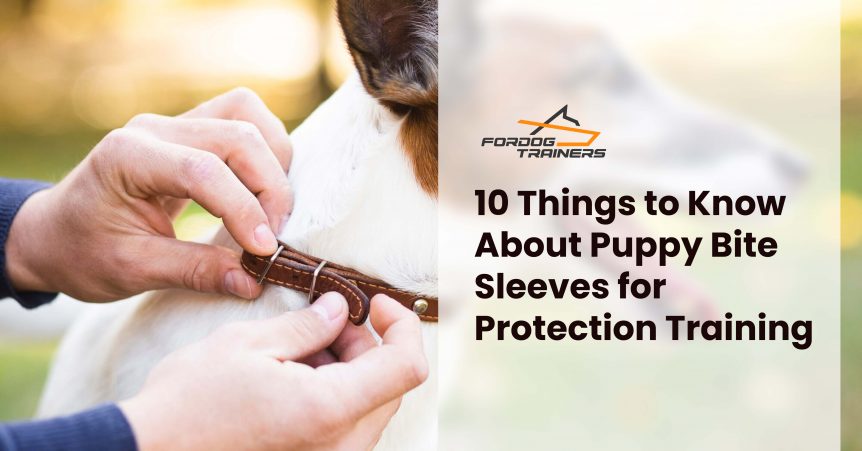Puppy bite sleeves are tools for introducing young dogs to protection training. These sleeves let puppies practice bite work safely, building confidence and skills early on. Puppy bite sleeves come in different materials and styles for various training stages and dog sizes. They provide a safe way for puppies to learn proper bite techniques without hurting the handler or themselves.
Contents
Key Takeaways
Key Points: Puppy Bite Sleeves
- Essential for safe protection training
- Made from durable materials like jute and French linen
- Can be introduced to puppies as young as 8 weeks old
- Improves bite technique and strength over time
- Regular inspection and proper fit are crucial for safety
1. Introduction to Puppy Bite Sleeves
Puppy bite sleeves are special training tools used to teach young dogs about protection work. These sleeves create a safe space for puppies to learn proper bite techniques without hurting the handler. Puppy bite sleeves are important for starting protection training.
The main job of puppy bite sleeves is to encourage and develop a puppy’s natural bite instincts in a fun and rewarding way. Using these sleeves, trainers can teach puppies where to bite, how hard to bite, and when to let go. This early training helps puppies feel confident and creates a strong bond with their handler.
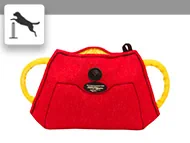
2. Types of Puppy Bite Sleeves
There are different types of puppy bite sleeves for various training stages and skill levels. Dog bite sleeves come in different styles to fit the needs of both puppies and handlers:
1. Soft sleeves for beginners: These sleeves are made from softer materials and are great for introducing puppies to bite work. They give puppies a comfy surface to grip and feel confident.
2. Intermediate sleeves: As puppies get better at training, intermediate sleeves offer more resistance and toughness. These sleeves help develop stronger bites and proper technique.
3. Hard sleeves for advanced training: Once puppies have learned the basics, hard sleeves give them a tougher challenge for bite work. These sleeves are made to be like real-life situations and prepare dogs for advanced protection training.
3. Materials Used in Puppy Bite Sleeves
The materials used in puppy bite sleeves are important for the dog’s comfort and the sleeve’s durability. Two popular materials for high-quality bite sleeves are jute and French linen:
Jute: This natural fiber is tough and can resist bites well. Jute sleeves give puppies a good grip and can handle being used a lot. The texture of jute also helps make dogs want to bite more.
French Linen: French linen is both comfy and strong. It’s softer than jute, which is good for younger puppies or dogs with sensitive teeth. French linen sleeves are also tough and can handle regular training sessions.
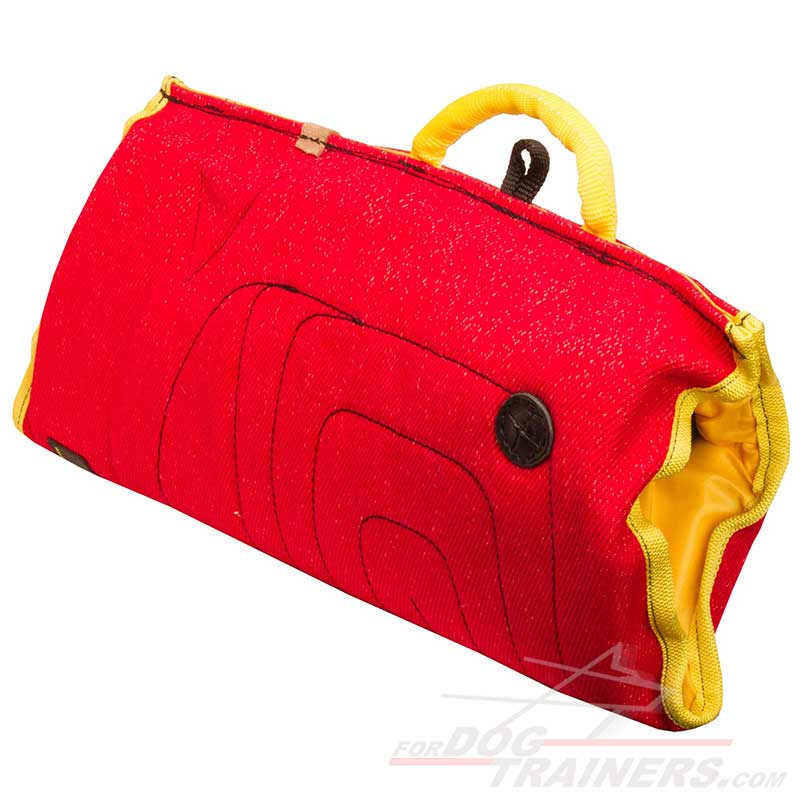
4. Selecting the Right Puppy Bite Sleeve
Choosing the right puppy bite sleeve is important for safe and effective training. Think about these things when picking a sleeve:
1. Age: Younger puppies need softer sleeves, while older puppies can handle tougher materials.
2. Breed: Different breeds have different bite strengths and styles, so choose a sleeve that fits your dog’s traits.
3. Training level: As your puppy gets better, you’ll need to use more challenging sleeves to match their skill level.
Getting the right size and fit is crucial for both the dog’s safety and how well the training works. High-quality French linen bite sleeves for puppies come in different sizes to fit your growing dog perfectly.
5. Introducing Bite Sleeves to Puppies
You can start introducing bite sleeves to puppies when they’re about 8 weeks old. At this age, puppies are learning how to control their bites and love to explore with their mouths. Starting early helps teach proper bite behavior and makes puppies like training.
When you start bite sleeve training, keep the sessions short but do them often. Try for 5-10 minute sessions, 2-3 times a day. This keeps the puppy interested and not too tired. Always end sessions on a happy note to keep your puppy excited about training.
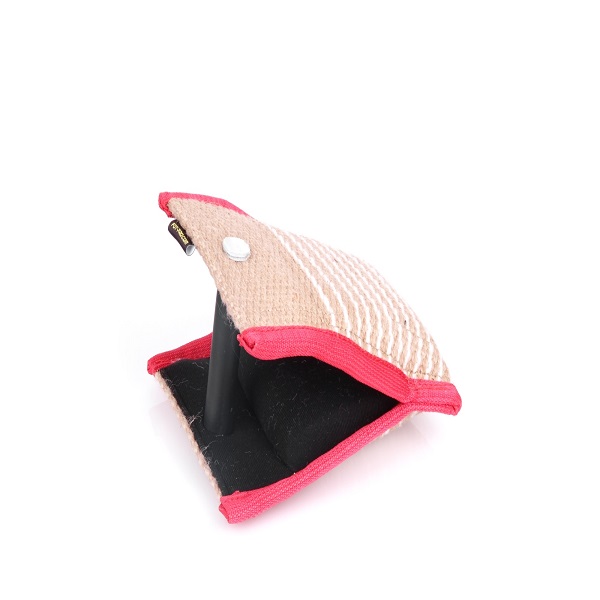
6. Safety Considerations in Puppy Bite Sleeve Training
Safety should always be the most important thing when training with puppy bite sleeves. Make sure the sleeve fits well and check it often for any wear and tear. Replace the sleeve if you see any damage that could hurt your puppy.
Handlers should also learn how to use bite sleeves properly before training. Knowing the right techniques and how to position your body helps prevent accidents and makes training sessions work better. Dog bite sleeves made of jute material are both safe and effective for training sessions.
7. Progressive Training Techniques
Good bite sleeve training is all about building trust and communication between the handler and the puppy. Start with easy exercises that encourage the puppy to target and grip the sleeve. Slowly make things harder as your puppy gets more confident and skilled.
Use a step-by-step approach in bite work to make sure your puppy develops good technique. Begin with still targets and then move on to moving sleeves. Introduce different angles and positions as your puppy gets better. Always reward good behavior and gently correct mistakes to keep training positive.
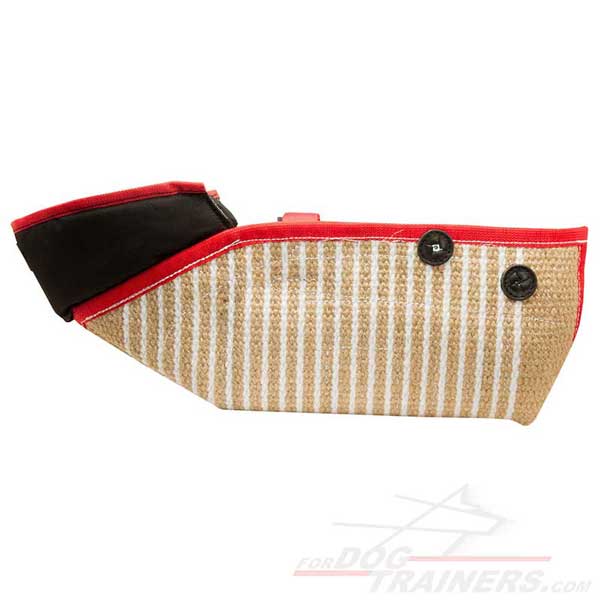
8. Benefits of Early Bite Sleeve Training
Starting bite sleeve training early has many benefits for puppies. It helps improve their bite technique and strength, setting a good foundation for future protection work. Puppies who get proper early training often do better in advanced certifications when they’re older.
Early training also helps puppies develop better self-control and learn to follow commands. These skills help in other areas of training and daily life, resulting in a well-behaved and confident adult dog. Revolutionary bite protection sleeves can help achieve these training goals.
9. Breed-Specific Considerations
While many breeds can benefit from bite sleeve training, some are especially good at protection work. Breeds like German Shepherds, Belgian Malinois, and Rottweilers are often chosen because they naturally want to protect and love to work.
When training different breeds, it’s important to adjust your approach to fit their specific traits. For example, high-energy breeds might need more frequent but shorter training sessions, while calmer breeds might do better with longer, less intense sessions.
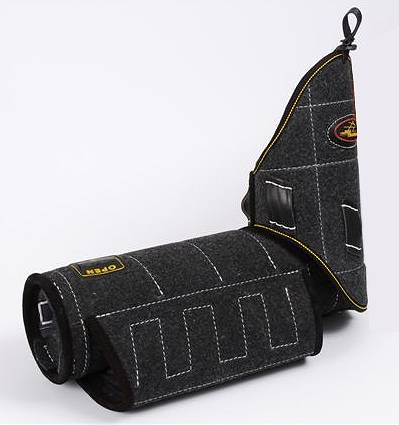
10. Advanced Puppy Bite Sleeve Training
As your puppy gets better at training, you’ll need to use more challenging equipment. Moving from soft puppy sleeves to intermediate and hard sleeves should be done slowly, always making sure your dog is ready for the next level.
Using other protection training equipment, like bite suits and hidden sleeves, can help prepare your dog for more realistic situations. Protection dog training bite sets often include various tools to support complete training programs.
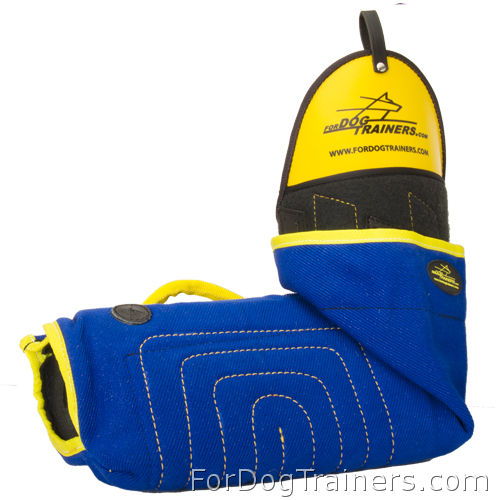
Conclusion
Puppy bite sleeves are great tools for safely introducing young dogs to protection training. By starting early and using the right equipment, you can help your puppy develop strong bite skills, confidence, and a good foundation for future training. Always put safety first, go at your puppy’s pace, and make training sessions fun and rewarding. With patience and regular practice, your puppy will be on their way to becoming a skilled protection dog.

